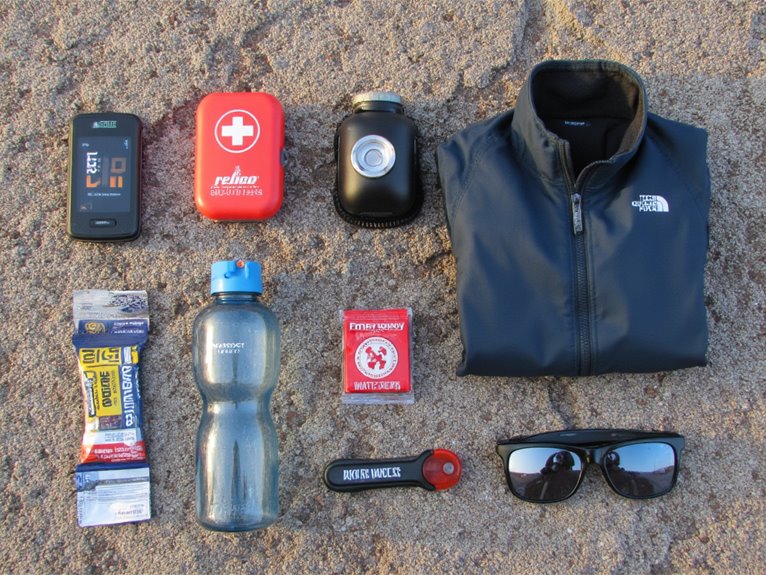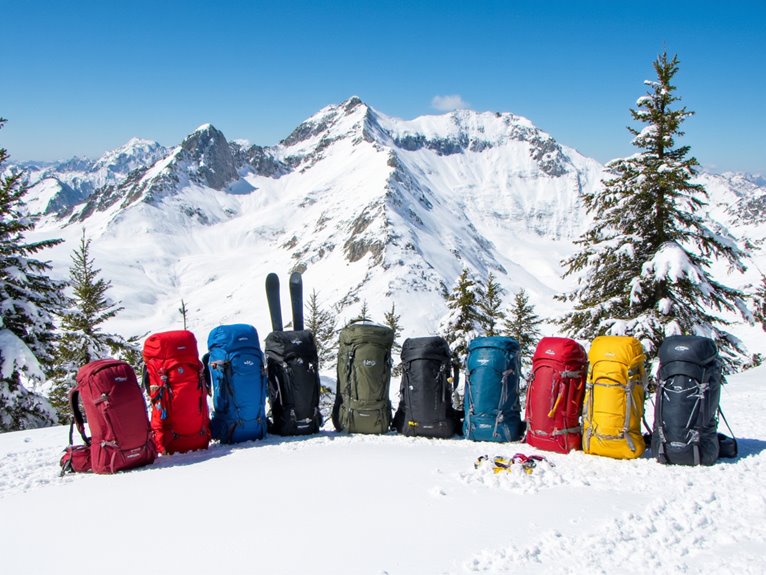What Is the Most Useful Tarp Size?
The most useful tarp size depends on the intended use, environment, and level of coverage needed. Small tarps (6×8 to 8×10 feet) are ideal for backpacking, while medium tarps (10×12 to 12×15 feet) are suitable for camping and outdoor events. Large tarps (20×20 feet or larger) are necessary for heavy-duty applications. For emergency preparedness, a 10×10 to 12×12 feet tarp is a good starting point. Evaluating your specific needs will help you determine the perfect tarp size for your situation, and considering factors like material, portability, and features will guarantee you find the best tarp for your requirements, and a thorough understanding of these factors can lead to a more informed decision.
We are supported by our audience. When you purchase through links on our site, we may earn an affiliate commission, at no extra cost for you. Learn more. Last update on 27th December 2025 / Images from Amazon Product Advertising API.
Small Tarp Sizes for Backpacking
When venturing into the wilderness, backpackers often prioritize lightweight and compact gear, which is why small tarp sizes, typically ranging from 6×8 to 8×10 feet, have become a staple in many backpackers' kits.
These smaller tarps provide an ideal balance between weather protection and packability, making them an excellent choice for thru-hikers and minimalist backpackers.
Their compact size allows for easy storage and setup, while still providing adequate shelter from the elements.
Additionally, small tarps are often more affordable and versatile, making them a great option for those who want a reliable and efficient shelter solution without breaking the bank.
Medium Tarps for Camping and Outdoor
In the realm of medium tarps for camping and outdoor activities, a key consideration is how to effectively utilize these tarps to safeguard gear and provide reliable weather protection.
This size tarp is ideal for covering tents, as well as storing outdoor equipment and supplies.
Tent and Gear Coverage
Outdoor enthusiasts often require a balance of protection and portability when it comes to covering their tent and gear, making medium tarps an ideal solution for camping and outdoor adventures.
A medium-sized tarp provides ample coverage for a standard tent, protecting it from the elements and harsh weather conditions.
Additionally, medium tarps are versatile enough to cover other gear, such as backpacks, coolers, and camping equipment.
This size tarp is also easy to transport and set up, making it an excellent choice for backpackers and campers who need a reliable and efficient solution for their gear protection needs.
Weather Protection Options
When venturing outdoors, it's vital to think about the weather conditions you'll face.
A medium-sized tarp can offer excellent protection from rain, wind, and sun exposure. For camping, a 10×12 or 12×15 tarp provides a comfortable canopy for your campsite, while for outdoor events, a 15×20 tarp can cover a larger area.
Look for a tarp with a waterproof and UV-resistant coating to guarantee durability. Additionally, ponder the tarp's denier rating, which affects its strength and resistance to tears.
Outdoor Storage Solutions
Medium-sized tarps are versatile tools for organizing and protecting gear, offering a convenient and adaptable storage solution for camping and outdoor enthusiasts.
They provide a dry and secure space to store equipment, keeping it protected from the elements and out of the way.
In camping settings, medium tarps can be used to cover gear, creating a makeshift storage area or even a temporary shelter.
For outdoor events, they can serve as a canopy or awning, providing shade and protection from the sun or rain.
With their durable design and waterproof material, medium tarps are an essential addition to any outdoor adventure, offering a reliable and efficient storage solution.
Large Tarps for Heavy-Duty Use
Large tarps, designed for heavy-duty use, cater to applications that require extensive coverage and exceptional durability.
These oversized tarps provide ample protection for large equipment, vehicles, or structures, making them ideal for industries such as construction, agriculture, and manufacturing.
With extra-large size options available, users can safeguard thorough coverage for their valuable assets, even in the most demanding environments.
Heavy-Duty Coverage Needs
For applications requiring maximum coverage and durability, heavy-duty tarps are designed to provide unparalleled protection against the elements, making them an essential tool for various industries and heavy-duty uses.
These tarps are built to withstand harsh weather conditions, heavy winds, and intense sunlight, safeguarding that valuable assets remain safe and secure.
In construction, agriculture, and manufacturing, heavy-duty tarps provide reliable coverage for equipment, materials, and infrastructure.
Their robust construction and reinforced materials guarantee a long lifespan, even in the most demanding environments.
Extra-Large Size Options
When heavy-duty applications demand exceptional coverage, extra-large tarps offer unparalleled protection, providing extensive shielding for massive equipment, sprawling infrastructure, and vast storage areas.
These oversized tarps are designed to withstand harsh weather conditions and provide long-lasting durability.
Ideal for large-scale construction projects, outdoor events, or industrial storage facilities, extra-large tarps guarantee thorough coverage and protection from the elements.
Available in sizes ranging from 20×20 feet to 50×50 feet or larger, these massive tarps can be customized to fit specific needs.
With reinforced corners, heavy-duty stitching, and robust materials, extra-large tarps provide reliable safeguarding for valuable assets, safeguarding uninterrupted operations and minimizing downtime.
Tarp Size for Emergency Preparedness
In emergency preparedness, having a tarp of the right size can be a lifesaver, providing essential shelter and protection from the elements in the aftermath of a disaster.
A tarp size of 10' x 10' to 12' x 12' is often ideal for emergency preparedness, as it provides sufficient coverage for a small to medium-sized shelter.
This size range also allows for easy transportation and storage. Additionally, a tarp of this size can be used to create a makeshift roof, wall, or floor, providing versatility in emergency situations.
When selecting a tarp for emergency preparedness, consider the number of people it will need to shelter and the type of environment it will be used in.
Choosing the Right Tarp Material
Selecting the right tarp material is essential, as it directly impacts the durability, water resistance, and overall performance of the tarp in various environmental conditions.
The most common tarp materials are polyester, nylon, and polyethylene.
Polyester tarps are lightweight, breathable, and suitable for camping and outdoor events.
Nylon tarps are stronger and more durable, making them ideal for heavy-duty applications like construction and landscaping.
Polyethylene tarps are waterproof, UV-resistant, and perfect for long-term outdoor use.
When choosing a tarp material, consider factors like weather conditions, intended use, and desired level of durability.
Measuring for the Perfect Fit
To secure a reliable and effective fit, it is crucial to accurately measure the area or object that requires coverage, taking into account any obstacles, corners, or irregular shapes that may affect the tarp's performance.
Measure the length, width, and height of the area to be covered, noting any protrusions or recesses. Consider the tarp's intended use and the environmental conditions it will face.
For example, if you're covering a boat, measure the hull's dimensions, including any protruding features like cleats or railings.
Record your measurements carefully, as even a small miscalculation can result in a poor fit.
Balancing Portability and Coverage
When choosing a tarp, balancing portability and coverage is essential, as a larger tarp may provide superior protection but become unwieldy to transport or store.
A smaller tarp may be lightweight and easy to carry, but it may not provide adequate coverage for your needs.
To strike a balance, consider the tarp's intended use and the environment in which it will be used.
For backpackers, a compact 5×7 foot tarp may be ideal, while a larger 10×10 foot tarp may be more suitable for camping or outdoor events.
Ultimately, the key is to find a tarp size that provides sufficient coverage without sacrificing portability.




